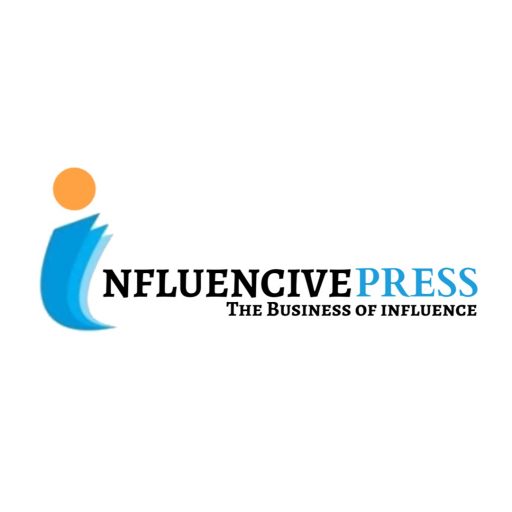Whether a small-business owner, an eBay seller, a medium-sized business owner,or merely trying to break into the effective copywriting industry, understanding the essentials of writing sales-oriented copy and put one on a track to success. At its principal, copywriting is another trick in a business’ marketing toolbox. An ad or marketing piece can be broken or made by a well-written copy. Copywriting can associate with either well-spent advertising funds or a waste of advertising dollars.
Many people underestimate the uniqueness of persuasive copywriting. Some people can’t count the number of times they have heard that some freelance writers say they want to shift from article writing to copywriting. It is because it is merely an extension of their prevailing abilities. Copywriting comes naturally to some people, but for most, it is an alien landscape; they do not know how to steer. Copywriting is about more than writing the firm sell deals letter than many short copywriting evolutions suggest. One can cringe when he/she sees those over-the-top deals messages which do little more than deliver an ugly depiction of persuasive copywriting, sales, and marketing.
Well-crafted copywriting doesn’t need to shatter a person over the head. It doesn’t have to go down in bold font and capitalization. The message should stand without an excess of heavy-handed sales language and design accompaniments. Copywriter associates, many sales letters are remorseful of this technique with a writer who doesn’t genuinely understand copywriting’s primary determination. However, successful copywriting can be achieved in 8 easy steps.
1. Features versus benefits
One shouldn’t forget to include the benefits of what they are offering when writing product and service descriptions. Benefits contain everything the customer experiences when they use any product and generally hint at emotion. For example, if a business person is selling rain jackets, when he/she writes the copywriters’ web description, they shouldn’t just list the material type, and color like it is a red waist-length raincoat.
Add a little about benefits, like maybe it’s guaranteed to keep them dry and look stylish, and they also write that it is also made of a breathable material that won’t trap sweat inside. Tell the customers if the fabric is morally sourced or made from recycled materials. It makes purchasing much more alluring and justified as they can imagine what they will experience.
2. Employ storytelling
The excellent method to build trust and community is to connect with the audience. When users can relate to copywriters and their businesses, they are more likely to become customers. One of the best ways to attain this is through storytelling. They are giving real-life examples or stories to illustrate the main points.
There are a few ways to approach this. Copywriters should consider the situation a latent customer is in and talk about how they were once there. If the product or service is geared toward ambitious entrepreneurs, copywriters can share a little about their prior experience and the challenges they faced. Maybe they were in a financial struggle before starting the business. They can tell them about it and how they got to where they are now.
Storytelling can also be more straightforward, like citing something recent they experienced that inspired their latest article. For example, copywriting is something copywriters have personally been studying lately, which inspired the writing. After reading multiple books, absorbing other materials, and attending seminars, they thought it would be excellent knowledge to share.
3. Sound like an expert
If copywriters sound like an expert on any given topic, people are more likely to trust the brand. They should use statistics and numbers when speaking or writing about the product or service. It is a reliable way to build reliability. Data that copywriters use should always be rightfully sourced, and they should ensure that they refer back to who collected it. They should avoid making claims, especially magnificent ones, without real statistics, to prove it.
For example, a study by Vennli specifies that:
- Use primary search with eighty-nine percent of marketing interventions that have attained a 50 percent profit rate when fashioning their pitches.
- Thirty-four percent of interventions say that respect and reliability in the market are the primary reason they win pitches.
- Fifteen percent of marketers say that status predisposed how they select which companies to work with.
If copywriters can source and share their own company’s data and Data Science and offer exclusive stats, it’s possible to spread naturally. Anyone can accumulate data from other sources online, but sharing complete information is powerful.
4. Use urgency
Suppose you’re doing online shopping, and there are 50 pairs of the shoes you want to be left in stock. Odds are, you wouldn’t be in too much of a rush to obtaining.
Now, if there were only several shoes left, it would perhaps be a different story. You’d be more likely to buy, so you don’t miss out.
Building an intellect of urgency is an excellent method to inspire buyers to take action:
- Announce that a sale is nearly over
- Display how many pieces are left of a product
- Reminder consumers that a voucher only lasts until an assured date
The customers would take action sooner than later with policies like these. But, it would help if you were careful not to create a false logic of urgency. Suppose if you receive an email a few times per week that claim that you are missing out on the best deal of the year, you would quickly get through this. One should use an urgent language carefully.
5. Offer exclusivity
Everyone loves feeling unique and sole. It is how several luxury companies brand themselves. If people purchase a product from them, they are part of a limited group.
All businesses can not pull this off, but here are some methods to try:
- One could have a members-only area of a website.
- Brand the product as infrequent and one of a kind
- Sell inadequate edition products.
- Offer a secluded newsletter.
To promote genuine exclusiveness, try creating partial collections or products that are only sold for a limited period. People can still have their main items, but they can take advantage of this copywriting approach. Similarly, they could create products that use infrequent resources.
6. Use honesty
Being honest about business is the key to success. People may think that stating the disadvantages wouldn’t be useful, but it can help pretty a bit. It makes them appear more reliable and credible since they focus on their products’ good things.
Be honest about how the company started, what the products do and don’t do, and what they can deliver. The last thing people want to do is surprise the customers or make them feel displeased.
7. Include calls to action
It is the first copywriting policy almost every entrepreneur learns first. It is also one of the most operative ways. A call to action is simply an expression that tells users to take precise action.
These include:
- Buy now
- Don’t wait any longer.
- Contact us today
- Get your free quote
It is sufficient to make a sale or lead a customer toward one. For example, you are promoting a new feature of a product in a blog post. Some possible customers are very enthusiastic, but you don’t comprise any call to action or link to the product. Now, imagine how many sales you would be misplaced. It would help if you used the need to move for significant users through the sales funnel to dodge this.
8. Get them saying yes
Copywriters can tailor their content perfectly to their personalities when they understand their customers well enough. They should ask questions that they are probably thinking about throughout their sales copy. If the answer is yes, they are more likely to decide on the acquisition later. It also is a delightful way to build trust as it shows them to understand them well.

